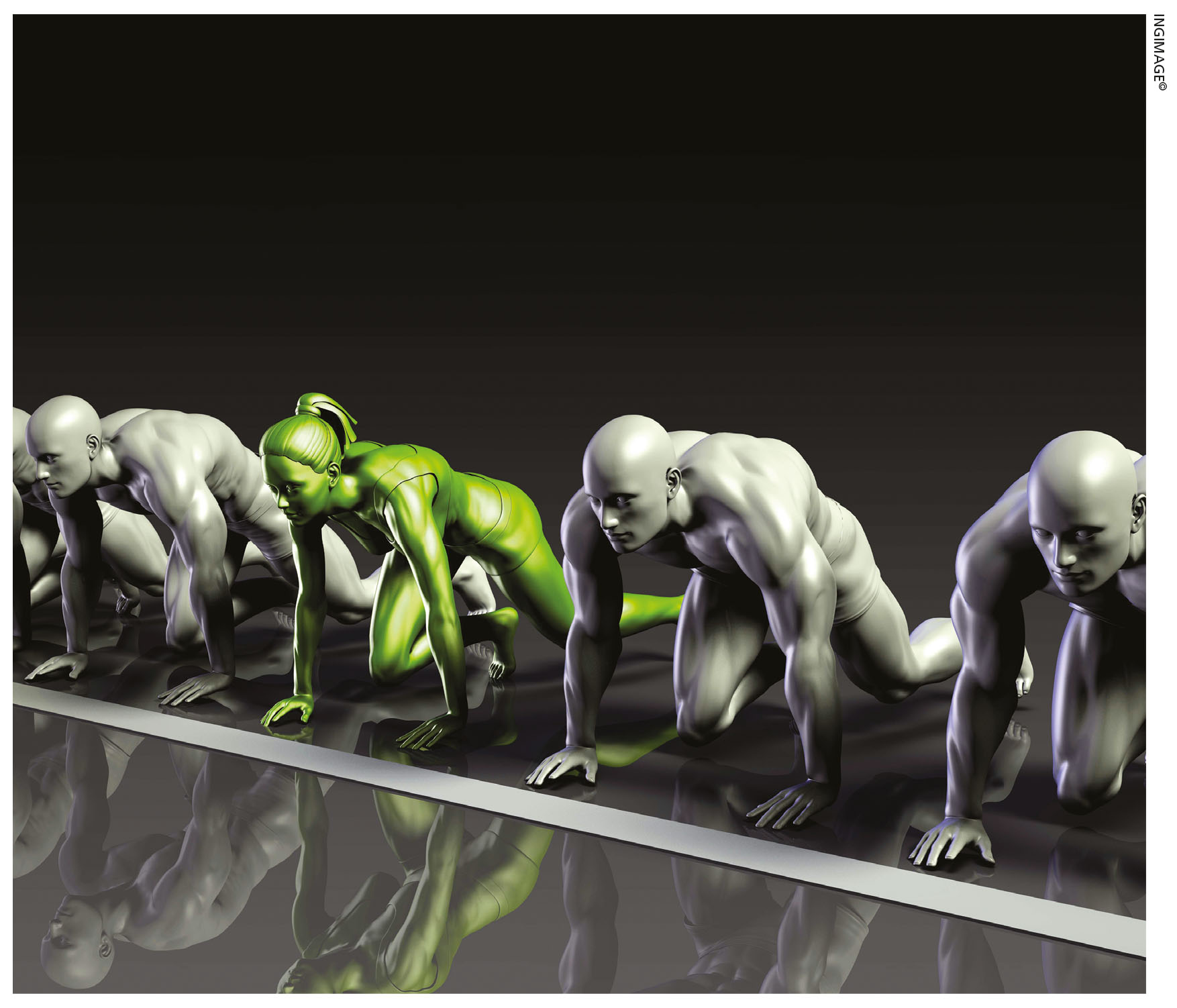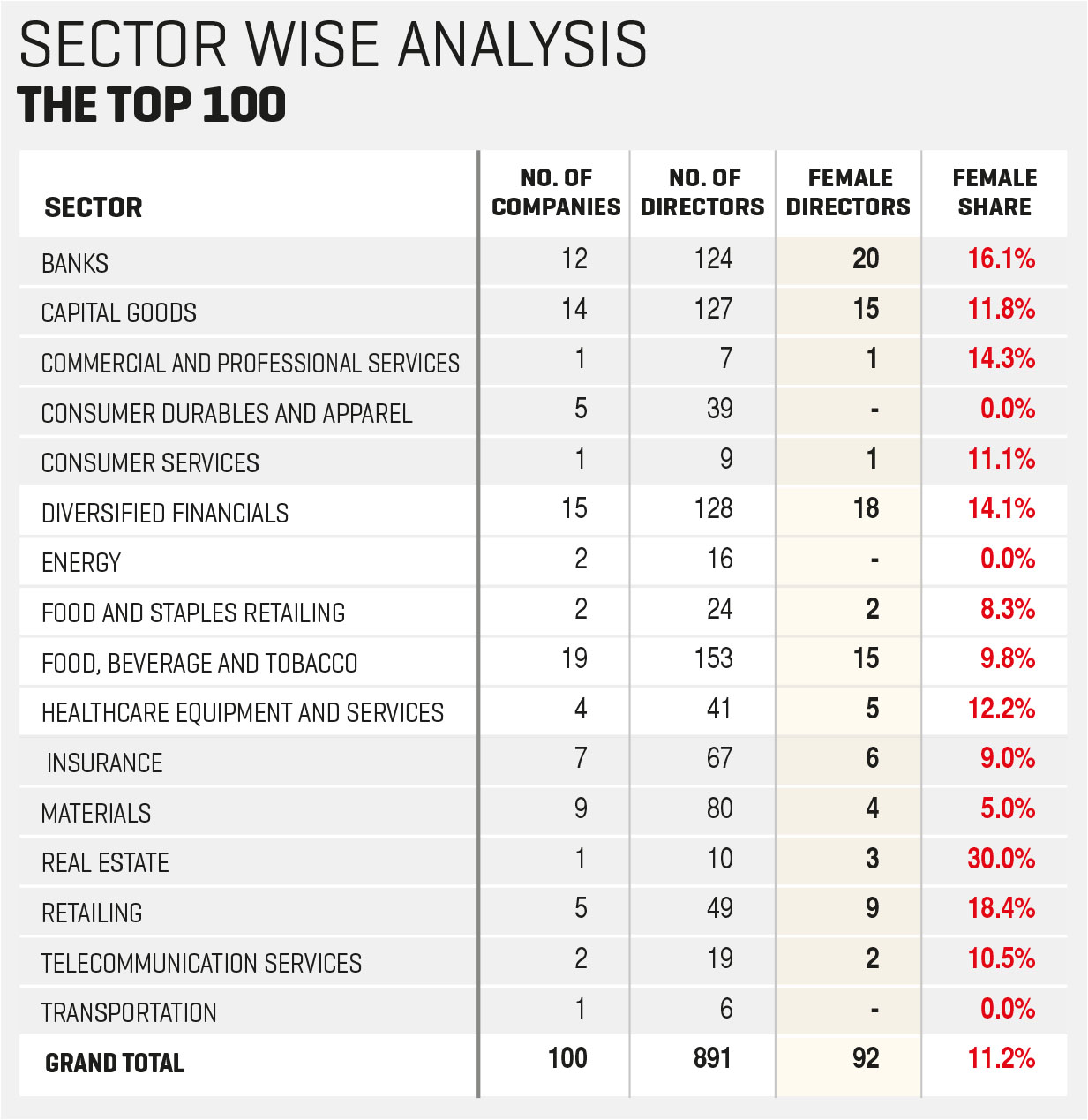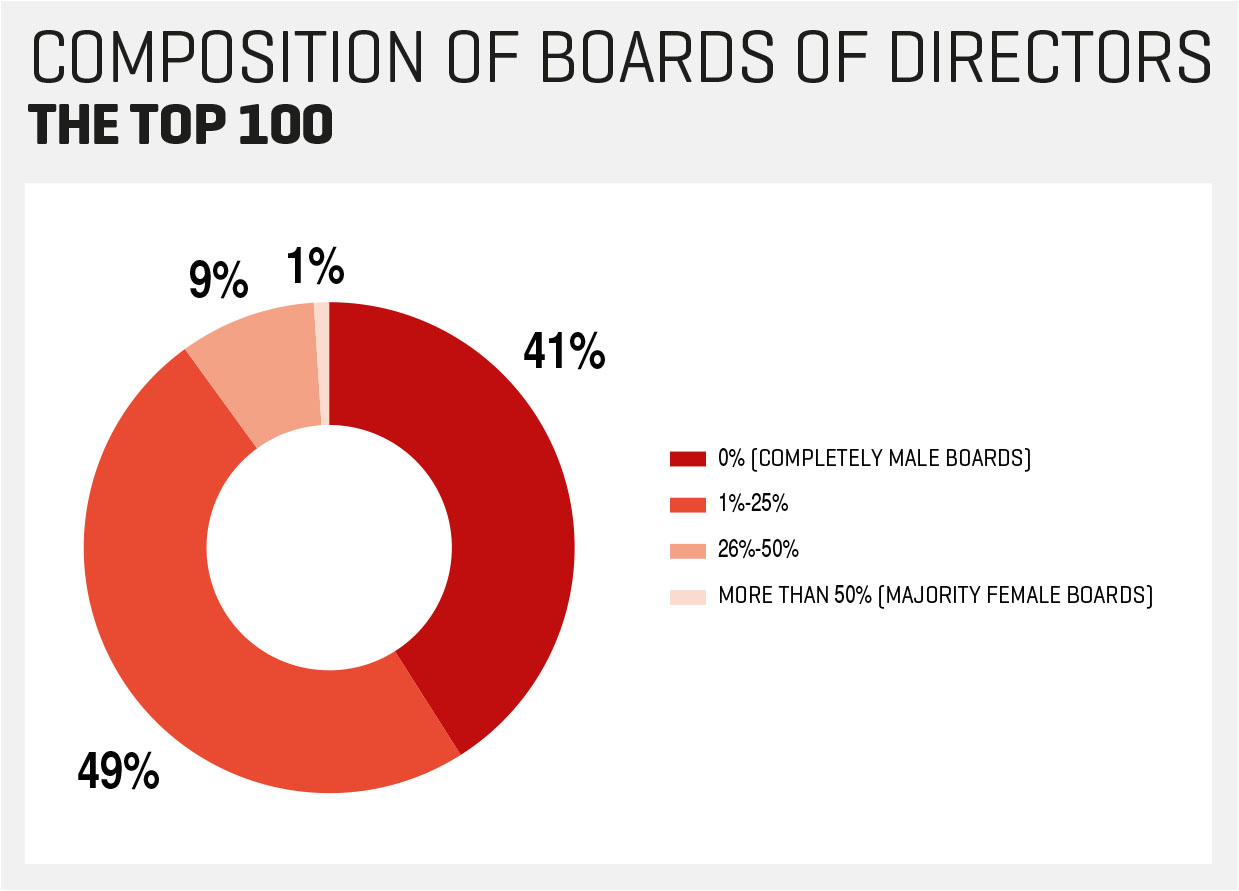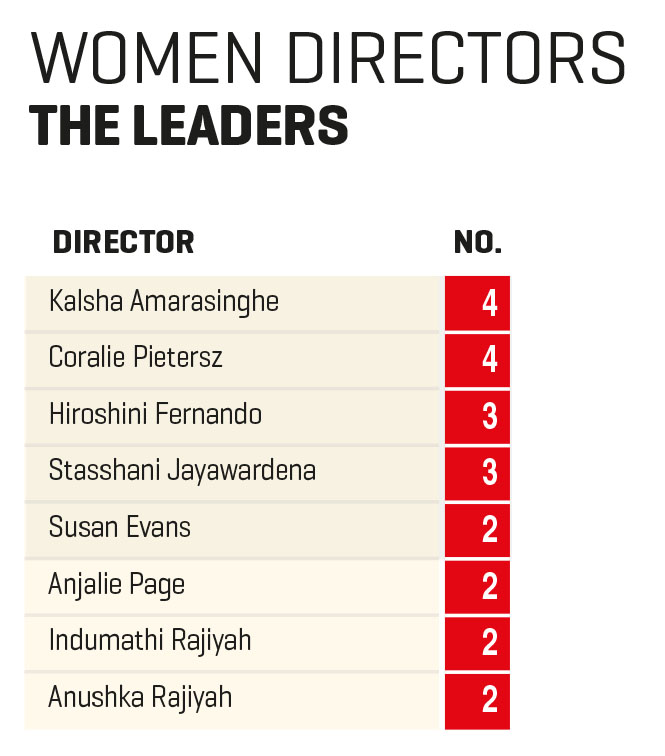BOARD BALANCE | 2020/21
THE GENDER SCORECARD
Female representation on the boards of directors of Sri Lanka’s listed companies

“Fostering gender equal leadership is one way to create a more efficient, equitable workplace. It contributes to the advancement of gender equality and achievement of the Sustainable Development Goals (SDGs),” the UNDP observes, in its report titled ‘Gender Diversity and Inclusion for a Fair Business Environment: An ASEAN Perspective.’
Before the onset of COVID-19 in early 2020, female talent was often cited among the underutilised assets in the business world that could help drive productivity and sustainable growth. While this has continued to be true during the pandemic, McKinsey notes that women have made important gains in representation particularly in senior leadership despite the new challenges.It continues: “Gender inclusive policies bring more than just a positive economic impact to the community. A recent study shows gender diversity is the right choice for companies aiming for sustainability and business success. Firms scoring high on gender diversity in executive teams are 25 percent more likely to achieve above average profitability than companies that do not prioritise this agenda.”
In its latest Women in the Workplace report, McKinsey observes that “women are rising to the moment as stronger leaders and taking on the extra work that comes with this; compared with men at the same level, women are doing more to support their teams, and advance diversity, equity and inclusion efforts.”

When it comes to the situation on the ground, Sri Lanka was ranked No. 116 in the World Economic Forum’s (WEF) Global Gender Gap Index 2021, lagging behind Bangladesh (65) and Nepal (106), but ahead of the Maldives (128), Bhutan (130), India (140), Pakistan (153) and Afghanistan (156). This marks a decline of 14 notches from the previous year for the island.
As for the sub-indices pertaining to matters of economic participation and opportunity, educational attainment, health and survival, and political empowerment, Sri Lanka was ranked 132nd, 88th, 30th and 90th respectively.
For female labour force participation, the country recorded a rate of 30.9 percent in the second quarter of 2021 compared to the 31.6 percent and 34.6 percent registered in the corresponding periods of the preceding year and 2019 respectively.
In addition, the female unemployment rate of 7.7 percent in the second quarter of 2021 compared somewhat favourably to the 8.2 percent and 7.5 percent recorded in the same period for 2020 and 2019 respectively. That said, these figures have also been at least double that of the men’s unemployment rate, which stood at 3.8 percent, 4.1 percent and 3.4 percent in the second quarter of 2021, 2020 and 2019 respectively.
Where corporate boards are concerned, companies with higher gender diversity have been found to perform better in terms of financial measures such as returns on equity and total assets, and the price to earnings ratio, in addition to improving risk management.
But a report by BoardEx reveals that while many major global indices made progress in advancing gender equity in 2020, there is still much to be done to achieve parity.
As for the local context, an analysis of the LMD 100 in financial year 2020/21 considers the number and share of directorships held by females. Additionally, it provides a breakdown of female representation on company boards in the context of 16 business sectors ranging from banking, diversified financials and insurance, to telecom services, retailing and more.
An in-depth study of the data indicates that 41 percent (the same as in the previous year) of leading listed company boards in Sri Lanka consist entirely of males whereas the majority (49%) of the country’s boardrooms reflect between one percent and 25 percent female representation. This leaves nine percent with a female representation of between 26 and 50 percent.

Meanwhile, a mere one percent of LMD 100 corporates have a majority (i.e. more than 50%) female board of directors.
In cumulative terms, the share of female representation on the boards of the foremost listed entities in Sri Lanka amounts to slightly above 11 percent.
As far as the sectors are concerned, real estate boasts the highest female board representation (30%) followed by retailing (18.4%), banks (16.1%), commercial and professional services (14.3%), diversified financials (14.1%), healthcare equipment and services (12.2%), capital goods (11.8%), consumer services (11.1%), telecommunication services (10.5%), food, beverage and tobacco (9.8%), insurance (9%), food and staples retailing (8.3%), and materials (5%).

At the other end of the spectrum, consumer durables and apparel, energy and transportation have the dubious honour of not having any female board representation.
And notably, among the women on the boards of Sri Lanka’s leading listed corporations, several hail from families who have a controlling interest in them.

Given that females represent a little over 10 percent of the boards of LMD 100 companies, there’s ample room to work towards a more healthy gender balance in corporate directorships.
With this number increasing gradually amid efforts to encourage more women representation on corporate boards, there continues to be hope that listed entities will work towards improving the gender balance.



